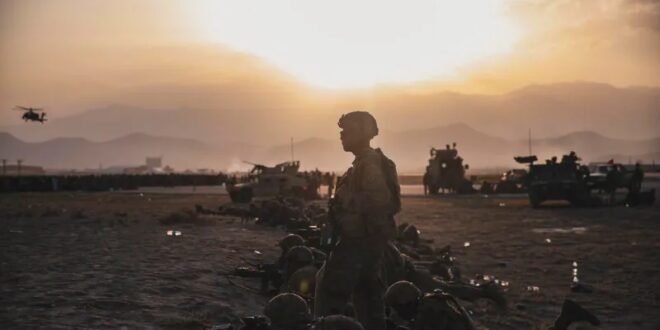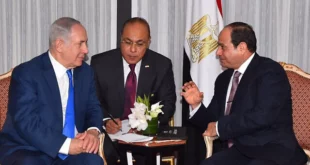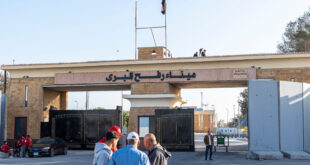The Dismal Track Record of U.S. Military Interventions
American soldiers have been deployed abroad almost continuously since the end of World War II. The best-known foreign interventions—in Vietnam, Afghanistan, and Iraq—were large, long, and costly. But there have been dozens of other such deployments, many smaller or shorter, for purposes ranging from deterrence to training. Taken as a whole, these operations have had a decidedly mixed record. Some, such as Operation Desert Storm in 1991, which swept the Iraqi dictator Saddam Hussein’s forces out of Kuwait, largely succeeded. But others—such as those in Somalia, Haiti, Afghanistan, Iraq, Libya, and elsewhere—were disappointments or outright failures. It is these unsuccessful post–Cold War interventions that have engendered serious doubts among policymakers and the public about the role of force in U.S. foreign policy.
Even so, U.S. decision-making still has a strong bias in favor of military intervention. When crises emerge, the pressure for a U.S. military response is often immediate, on the grounds that it is better to try to control the situation than to do nothing. But in many cases, the United States could likely have achieved its goals without intervening militarily. To explore how often U.S. military interventions have advanced U.S. objectives, we built a database of conflicts and crises that involved U.S. interests between 1946 and 2018. Conflict cases were drawn from the Uppsala Conflict Data Project and crisis cases came from the International Crisis Behavior data set. To identify cases involving U.S. interests, we looked for conflicts and crises that posed a direct threat to the U.S. homeland or to a U.S. treaty ally, occurred in a region of high strategic importance for the United States, or involved a large-scale humanitarian crisis. We then identified those conflicts and crises that prompted the deployment of U.S. military forces. To be counted as an intervention, the U.S. forces had to meet certain thresholds (at least 100 personnel for a full year, or a larger presence for a shorter time in the case of ground interventions). For each conflict or crisis, we also collected information on several outcome measures including conflict or crisis duration, intensity, changes in economic development and democratic institutions in the country affected by the conflict or crisis. Of the 222 conflicts and crises from 1946 to 2018 that involved U.S. interests, the United States chose to intervene on 50 occasions and not to intervene on 172.
Our findings flip the conventional wisdom on its head: irrespective of whether the United States intervened, the outcomes were largely the same. Across each of the dimensions we considered, there was no statistically significant difference between the cases that prompted an intervention and those that did not. In other words, the evidence that U.S. military interventions are consistently achieving their goals is sparse. But this does not mean that all interventions fail. A closer look suggests that there is a subset of operations that is more likely to advance U.S. interests and achieve U.S. objectives: those that had clear, achievable goals and were informed by accurate assessments of local conditions.
Washington desperately needs to rethink its relationship to military force. Above all, it needs to stop regarding military adventures as the go-to solution for all potential threats. At the same time, however, it cannot view every potential intervention as an inevitable disaster that will divert resources from domestic priorities. The real danger is not military interventions per se but large ones with expansive objectives that are out of touch with the reality on the ground. Those are the ones that gamble with U.S. blood and treasure.
WHY FORCE FAILS
Clearly, some military interventions do advance U.S. interests. Our research shows that small, short interventions with narrow objectives that are well suited to military force can succeed. In the 1980s, for example, U.S. planes and aircraft carriers thwarted Libyan attempts to control the Gulf of Sidra. And in 1998, American cruise missiles struck targets in Afghanistan and Sudan in retaliation for al Qaeda’s bombing of the U.S. embassies in Kenya and Tanzania.
But when used in the wrong circumstances, interventions can fail disastrously. Large ones are particularly risky. Although massive applications of force can sometimes be the only way to achieve high-stakes U.S. objectives—as in World War II and the Korean War—they are nonetheless a big bet. If not done carefully, large interventions can turn into resource-consuming failures, saddled with expansive political goals that cannot be accomplished by military force alone.
The U.S. military is poorly equipped to handle political tasks. Military force can bring down a dictatorship, but it cannot establish an effective and democratic replacement. Nor can it stabilize long-running civil wars or overcome age-old ethnic divides. U.S. military interventions that have sought to accomplish such goals—in Vietnam, Somalia, Afghanistan, and Iraq—have failed. Even the tasks that military forces are well suited for—raising a partner army, for example—can fail when the scope of the task is too large or when the mission does not receive enough support. For evidence of that, look no further than the collapse of local security forces in Afghanistan following the withdrawal of U.S. forces in 2021.
Before World War II, the United States intervened primarily to conquer other lands or defend its own.
Although there is strong evidence that setting such expansive goals often leads to failure, our analysis shows that the decision to use military intervention to accomplish broad objectives has become increasingly common since World War II. Before the war, the United States intervened primarily to conquer other lands or defend its own. But after, when the Cold War began, American ambitions grew. Washington now sought to enhance regional security, oppose communism, rebuild countries, and promote global norms. After the Cold War, counterterrorism was added to the list of goals, and although the United States did not intervene more frequently, its aims steadily became more wide-ranging. Not surprisingly, heightened ambitions lowered the success rate of American interventions, and despite having the most powerful military on the planet, the United States often met with failure. Since the early 1990s, then, the share of interventions that failed to achieve their objectives has risen steadily. Our analysis suggests that before 1945, the United States achieved about 80 percent of its intervention objectives. During the Cold War, however, it achieved its objectives only about 60 percent of the time, and in the post–Cold War period, the rate of success has fallen to just under 50 percent.
Critics might argue that our study has a selection problem, if the crises and conflicts in which the United States intervened were also the ones that were most likely to fail no matter what. But there is little evidence to support that objection. Dozens of case studies suggest that there is no relationship between the difficulty of the underlying circumstances and the likelihood of intervention: there are plenty of hard cases in which the United States intervened and plenty of easy cases in which it chose not to. But as constraints on U.S. military power faded during and after the Cold War, the United States did adopt more and more expansive goals for the interventions it chose to pursue and was consequently less and less able to achieve these goals by relying solely on military force.
WASHINGTON’S RECORD OF FAILURE
Why have so many American interventions gone awry? One of the key findings of our research concerns when a military intervention is likeliest to succeed: when it decisively shifts the local balance of power in favor of the United States and its allies. This means that some of the most important determinants of success are the military strength of U.S. proxies and adversaries, the level of popular support for U.S. aims, and the degree to which third parties can interfere. Yet Washington tends to consider these factors too late (or even not at all), and it is prone to rely on inaccurate or insufficient information when it does.
The United States has a particularly dismal track record when it comes to correctly assessing others’ military power. During the Vietnam War, U.S. policymakers vastly underestimated the effectiveness of the Viet Cong and, therefore, misjudged the odds of success. The United States has often made a similar mistake when evaluating its partners. In Vietnam, Washington was too optimistic about the capabilities and self-sufficiency of its South Vietnamese partner, the Army of the Republic of Vietnam. In 1979, the United States overestimated the ability of its longtime ally in Iran, the shah, Mohammad Reza Pahlavi, to quell domestic unrest and was surprised by his rapid fall from power. More recently, Washington had too much confidence in the skill and commitment of the security forces it had built in Afghanistan, which collapsed quickly in the face of the Taliban’s advances.
The cost of these errors is high. Overestimating a partner’s capabilities or underestimating an adversary’s strengths can lead policymakers to start risky or costly interventions that they would have avoided with better information. Such misjudgments can also lead them to justify prolonging interventions that have no plausible route to success. Indeed, a lack of local support has been the undoing of many a U.S. military intervention. When the United States intervened in Haiti in 1994, U.S. policymakers mistakenly equated Haitians’ support for removing the military junta with enthusiasm for a U.S.-backed democratic government. Likewise, in Iraq after 2003, the Pentagon’s rosy assessments of the public’s enthusiasm for political transformation meant that U.S. forces were unprepared for the insurgency that followed.
U.S. policymakers have also often been surprised by the power of third parties to act as spoilers. Foreign militias, neighboring states, and other rivals have repeatedly ruined the United States’ best-laid plans. In 1950, U.S. policymakers failed to predict Chinese intervention in the Korean War. They would repeat the mistake in Iraq after the 2003 invasion, when they were surprised by the swift ascendance of Iranian militias. In both cases, the involvement of the third party should have been foreseeable, and Washington’s failure to take it into account was costly.
THE POWER OF THE POSSIBLE
There will always be situations in which military intervention is the best or only option for the United States. But policymakers must also recognize that in many cases, the best response to a crisis or potential threat is to take no military action at all and rely instead on diplomacy or sanctions—or simply learn to live with an elevated threat.
The United States should never deploy its military without first asking whether doing so can rapidly and sufficiently shift the local balance of power to enable U.S. forces or partners to achieve their goals. If the answer is no or maybe, then policymakers should favor nonmilitary alternatives. Policymakers should apply especially stringent scrutiny to proposals that involve large interventions. And they should be cautious of setting expansive objectives. Often, such goals conflate objectives that would be nice to have with those that are essential. After the invasion of Afghanistan in 2001, for example, the narrowly defined counterterrorism mission became intertwined with a broad, nation-building project, thus transforming an aspiration into a national security priority, even though no truly vital U.S. interests were at stake. Rather than increasing an intervention’s size or duration to take on more ambitious goals, policymakers should instead focus on those goals that are achievable.
Policymakers must have accurate information on local conditions to evaluate the chances of a proposed intervention’s success. To ensure that policymakers get the information they need, the intelligence services should elevate and weight more heavily the voices of diverse local experts—including those with the stature and inclination to provide candid information that Washington might not welcome—in their briefings and analyses. Such figures can provide more accurate indications of the potential risks that local political attitudes and dynamics could present to U.S. military interventions. These experts should also work with the intelligence and defense leadership in Washington to identify third parties who have the capabilities, interests, and intention to interfere with intervention plans, as well as the conditions that might prompt such interference. If China were to invade Taiwan, for example, North Korea or Russia might become involved. The challenge will be understanding how and when each might intervene. Taking seriously other political leaders’ redlines will be an essential part of the planning for any U.S. military intervention.
Future U.S. military interventions are likely, but costly failures need not be.
Finally, policymakers need more detailed and timely information to assess the military power of the United States’ adversaries and partners, which the intelligence services have often struggled to provide. In advance of the 2022 Russian invasion of Ukraine, for example, the U.S. government overestimated Russian military strength and underestimated Ukrainian capabilities. As a result, policymakers expected—and even started planning for—a swift Russian victory. Developing a more reliable understanding of the military capabilities of other adversaries and partners must become a top priority for the intelligence community. Analysts need to do more than count tanks, ships, and aircraft; they also need to take into account more sophisticated assessments of the social, economic, and industrial foundations of a country’s military power, the political and strategic culture of that power, and its commitment to fighting.
Future U.S. military interventions are likely, but costly failures need not be. A more effective policy requires Washington to rethink its view of military intervention: it is not a hammer for all nails but a specialized tool best used sparingly and carefully.
 Eurasia Press & News
Eurasia Press & News




